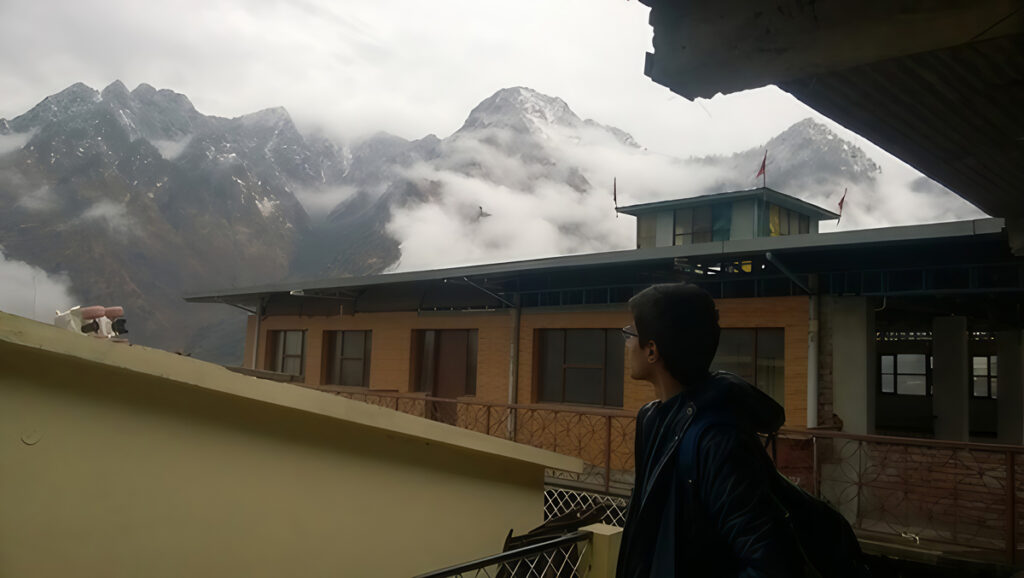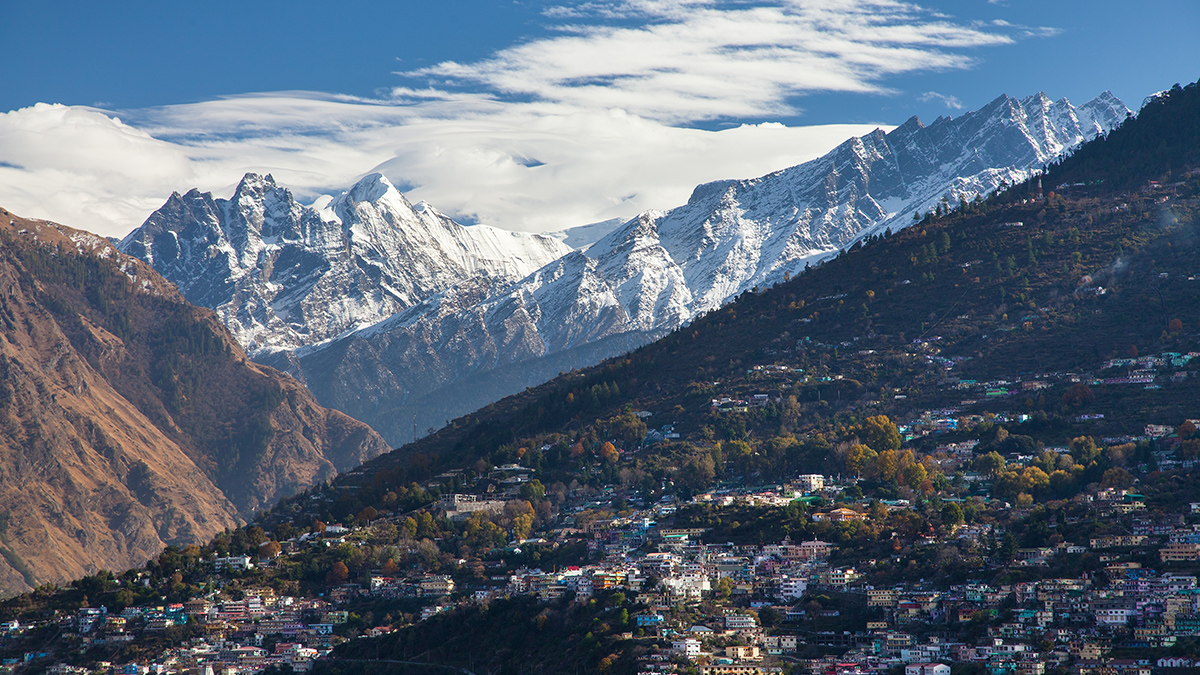The dramatic rescue of 41 workers trapped for 17 days in a collapsed Himalayan tunnel in India made global headlines in November 2023. The collapse occurred during work on part of the Char Dham highway project, an Indian federal initiative aimed at linking pilgrimage sites and supporting increased regional tourism.
From its inception, the project faced strong opposition from environmentalists and local residents because of its circumvention of environmental impact assessments (EIAs) in the ecologically fragile Himalayan region. Nongovernmental organizations and activists protested that by law, highway expansions exceeding 100 kilometers (62 miles) in length must undergo an EIA, but the highway ministry avoided this requirement by dividing the project into 53 smaller segments.
Environmental concerns over the Char Dham project prompted the country’s Supreme Court to establish a High-Powered Committee to oversee these issues. Although the committee recommended limiting road widths to 5.5 meters (18 feet) to mitigate landslide risks in the landslide-prone region of Uttarakhand state, the Supreme Court overruled this recommendation in 2021, allowing widths of 10 meters because of their strategic importance as feeder routes to the India-China border [Rawat and Semwal, 2023].
Scientific evidence consistently underscores the fragility of Himalayan ecosystems and the risks posed by large-scale infrastructure development.
This incident is not an isolated example of local concerns being sidelined in favor of development projects in India’s mountain ecosystems. In another case, climate activist Sonam Wangchuk and his supporters were detained in New Delhi in October 2024 after demanding more local autonomy for another Indian Himalayan state, Ladakh, to protect its landscape from large-scale infrastructure and mining projects.
Scientific evidence consistently underscores the fragility of Himalayan ecosystems and the risks posed by large-scale infrastructure development. For example, researchers have warned of increased cloudbursts and flash flooding—and their effects on erosion and safety—along the Indian Himalayas [Dimri et al., 2017], and numerous studies have linked increased landslide activity in the region to construction projects and development [Ives and Messerli, 1989; Singh et al., 2014]. Indeed, a global analysis of fatal nonseismic landslides from 2004 to 2016 revealed that India accounted for the highest percentage of construction-triggered landslide events (28%), followed by China (9%) and Pakistan (6%) [Froude and Petley, 2018].
India’s mountainous regions provide a lens to view how rapid and extensive development amplifies impacts seen by local communities especially. Uttarakhand, for example, has experienced roughly 40% decadal urban population growth in recent decades, leading to an unplanned surge in urban infrastructure that has resulted in large-scale deforestation and other detrimental environmental changes. Although economic growth is essential for the region, balancing it with sustainable and safe development is crucial—a challenge also faced by other mountain communities worldwide, such as in parts of the United States and Africa.
These examples prompt critical questions about the environmental injustice of imposing the interests and resource demands of broader society on mountain landscapes while neglecting the vulnerabilities of mountain communities. They also raise questions about the thinking and policies that led us to this juncture and about what measures we can adopt to safeguard these communities and ecosystems for future generations.
Mysticism Around the Mountains
Humankind’s fascination with mountains has long been immortalized in cultural histories, literature, and art. Especially for those living far from these rugged terrains, perceptions and depictions of mountains are often idealized and shaped by romantic notions of their majesty and mythical stature that fail to capture their complex realities and are far removed from the truth.

In South Asia, these depictions—portraying mountain ranges, escarpments, ridges, and valleys as the abodes of rishis, yogis, and deities—often overshadow the harsh realities that local inhabitants face. As the philosopher T. R. V. Murti once noted, “The Himalaya of the rishis and the yogis is more important as an ideal to us than are the actual rocks and the miserable huts of the people there” [Bharati, 1978, p. 78].
Smaller mountains and hills also have lasting cultural and spiritual significance. An ancient Hindu tale set in Mathura, where I was born, tells of how the deity Krishna urged villagers to nurture their lands and honor the nearby Govardhan Hill, which provided the fertile soil that sustained their cattle, rather than solely relying upon and worshiping the god of rain [Anand, 2023]. When the enraged god of rain punished the villagers by flooding the village, Krishna came to their rescue by lifting Govardhan Hill and providing shelter for seven days, ultimately humbling the god of rain.
Though the divine aura of Govardhan Hill—which has attracted countless pilgrims for generations, including me as a 12-year-old—is central to this timeless tale, Krishna’s lesson about nurturing and protecting the landscapes that sustain both ecosystem health and human survival is often forgotten. Another hidden, but highly relevant, message is that local communities and voices must be centered when environmental and economic policies affecting mountain regions are crafted.
Entrenched popular perceptions of homogeneous, picturesque mountain ranges often drive conservation and development policies in mountain regions.
It took me nearly a decade to fully appreciate these insights as my relationship with mountains evolved. Today, though I still respect the spiritual essence of the story of Govardhan Hill, I deeply value Krishna’s timeless message about preserving the connections between mountains and their inhabitants.
My perspective notwithstanding, entrenched popular perceptions of homogeneous, picturesque mountain ranges, as well as the interests of the broader public, often drive conservation and development policies in mountain regions without acknowledging the heterogeneity of mountain landscapes and the communities that rely on them [Bharati, 1978]. As development progresses rapidly and the gap between idealized perceptions and the lived realities of mountain environments widens, the resulting ecological damage and increasing risks to habitats and local communities become more urgent. This concern is amplified as questions are raised about the dilution of conservation laws in India and elsewhere.
A Mountainous Reality Check
By virtue of their high relief, weather, and position atop an active tectonic boundary, India’s mountainous regions are inherently highly vulnerable to natural disasters—and some hazards are becoming more unpredictable because of climate change [Dimri et al., 2017].
Much development in these regions—home to roughly 52 million people, or just 3%–4% of India’s population—is guided by the fact that they supply large portions of the water, natural resources, and energy that support more than 1 billion people living elsewhere. Thus, despite its effects on mountain ecology and communities, this development is often seen as vital to wider interests and public well-being across much of the country.
However, communities in mountain regions are also increasingly being strained by overtourism and related growth and development. This surge has been fueled by policies looking to promote and capitalize on tourism and, in the past decade, by social media, which often sensationalizes mountain locations, drawing even larger crowds. This issue affects areas from the high-altitude mountains of Ladakh to the biodiversity hot spot of the west coast mountains and the scenic ranges of northeastern states such as Arunachal Pradesh, Assam, Meghalaya, and Sikkim.
Whether for religious tourism or geotourism, influxes of tourists place immense pressure on local inhabitants. Although short-term economic gains are possible, the long-term sustainability of local economies is put at risk because of limited employment opportunities and rising living costs. Moreover, the ecological and environmental tolls are significant, as indicated by a multitude of development policy–induced disasters in the Himalayas [Shugar et al., 2021].

Unchecked development can, for example, lead to land subsidence, which jeopardizes the safety of infrastructure as the ground sinks. I vividly recall my trip to Joshimath, Uttarakhand—a gateway to Himalayan pilgrimage sites, trekking trails, and expeditions—in January 2015. Amid the beautiful towering peaks of the Garhwal Himalayan Ranges, I couldn’t help but notice fine cracks in some buildings and the generally poor infrastructure of the town, which left me with a lingering sense of unease.
The effects of climate change are leading to more frequent and unpredictable extreme-weather-driven events and are exacerbating the challenges and costs created by rapid and poorly planned development.
When news broke in 2023 of alarming subsidence in Joshimath, causing large cracks to form in roads and buildings and forcing residents from their homes (with lasting mental health impacts), I revisited photos I had taken 8 years earlier and was reminded that the signs of impending problems were already there. Years of large infrastructure projects and poor drainage had destabilized the town [Awasthi et al., 2024], which is in India’s most earthquake-prone zone. Unfortunately, an official scientific report by the Garhwal commissioner 50 years earlier that warned of these geological dangers and recommended strictly regulated construction because of the high seismic risk went unheeded.
The effects of climate change are leading to more frequent and unpredictable extreme-weather-driven events and are exacerbating the challenges and costs created by rapid and poorly planned development. Indian Himalayan states have repeatedly faced devastating flash floods, for example, such as in parts of Uttarakhand and Sikkim. As such incidents become alarmingly common, they raise serious concerns about the tolls for inhabitants of mountain communities and how they will cope with limited resources.
What Must Be Done
Land use changes and human disturbances can accelerate erosion, degrading landscapes within decades and vastly outpacing natural soil formation. A recent global assessment found that cropland, covering just 11% of the studied land, accounts for nearly half the total predicted soil erosion around the world [Borrelli et al., 2017]. Cropland erosion rates are estimated to be 77 times higher than rates in forests because replacing native vegetation with crops or bare soil increases exposure to precipitation and makes the land highly susceptible to erosion.
Such erosion can increase risks from natural hazards, and the loss of soil fertility threatens biodiversity, water and soil health, and long-term ecosystem functioning. History offers stark warnings. In early 20th century South Carolina, for example, unsustainable cotton farming led to severe soil erosion and gully formation. By the 1930s, entire farming communities, such as the one in Calhoun, S.C., were displaced and never returned [e.g., Anand, 2023].
The disparity between the rapid pace of human-induced change and the prolonged timeline for natural restoration underscores the urgent need for proactive measures to protect fragile environments.
Similar mechanisms come into play in development projects that remove or replace native vegetation in fragile ecosystems, such as the Char Dham project in Uttarakhand, which has involved extensive deforestation. Even more concerning is that the natural processes that stabilize degraded hillslopes may take thousands of years to restore these terrains [Anand, 2023]. The disparity between the rapid pace of human-induced change and the prolonged timeline for natural restoration underscores the urgent need for proactive measures to protect fragile environments.
For Earth scientists such as myself, modeling landscape evolution under varying hydroclimatic conditions and human disturbances, as well as monitoring for early signs of intensified erosion and land degradation on decadal timescales, is a multifaceted challenge and a pressing need [Tucker and Hancock, 2010; Anand et al., 2022]. Such research offers the potential for improved quantitative assessments of change and predictions of disasters, enabling communities to act before irreversible damage occurs.
Scientists must also communicate beyond academia and collaborate with local communities to address their priorities. These communities know best the challenges and changes in their regions, whereas scientists can bring their knowledge, networks, and skills to bear to understand the reasons for these changes and suggest viable solutions.
Collaborations organized through AGU’s Thriving Earth Exchange program, which connects scientists with local communities facing environmental challenges in North America, offer prime examples of success in turning science into action. Adapting that model to create similar programs in India and elsewhere could help address the unique challenges faced in vulnerable mountainous regions, ensuring scientific knowledge and community expertise lead to resilient solutions.
For their parts, governments and administrative authorities must approach development in mountainous landscapes with deep consideration of local conditions and the problems and aspirations of the resident communities. Including and prioritizing local voices in decisionmaking processes and heeding expert scientific assessments and warnings about environmental impacts are crucial to ensuring sustainable development. These necessities hold whether development projects are related to tourism or to other economic, industrial, or energy interests.
Industrial infrastructure projects in mountain regions may be considered vital to national interests but still must be undertaken carefully to preserve the ecological integrity of these fragile environments. If they are unregulated and unscientific, mining activities, for example, can generate debris that increases hillslope vulnerability, potentially leading to catastrophic landslides or other incidents.
We must be mindful of how romanticizing mountain environments in India and other vulnerable areas around the world can lead us to overlook their harsh realities.
Climate activist Sonam Wangchuk has highlighted this issue, pointing out that local people bear the brunt of such disasters while not reaping the benefits of extracted resources. In October 2024, Wangchuk and his supporters went on a 16-day hunger strike and were detained while advocating to empower local communities in Ladakh in decisionmaking related to environmental protections. This episode is a wake-up call that organizations and activists in the environmental advocacy and policy realms can play crucial roles in pressuring governments and corporations to prioritize sustainable practices over short-term financial gains.
On an individual level, we must be mindful of how romanticizing mountain environments in India and other vulnerable areas around the world can lead us to overlook their harsh realities and contribute to their degradation through overdevelopment. We must also be clear-eyed to confront the genuine challenges in mountain regions, where poorly planned incursions in the name of profit or popularity can amplify disasters that, especially amid the relentless global climate crisis, drastically disrupt the ecosystems and communities that inhabit them.
Bridging this widespread gap in perception is no easy task, but it is essential to help these areas endure the pressures we place upon them.
References
Anand, S. K. (2023), Representing the form and formation of Earth’s topography under natural and anthropogenic drivers, Ph.D. dissertation, Princeton Univ., Princeton, N.J., www.proquest.com/docview/2892428709?pq-origsite=gscholar&fromopenview=true&sourcetype=Dissertations%20&%20Theses.
Anand, S. K., et al. (2022), Inception of regular valley spacing in fluvial landscapes: A linear stability analysis, J. Geophys. Res. Earth Surf., 127(11), e2022JF006716, https://doi.org/10.1029/2022JF006716.
Awasthi, S., et al. (2024), Analyzing Joshimath’s sinking: Causes, consequences, and future prospects with remote sensing techniques, Sci. Rep., 14, 10876, https://doi.org/10.1038/s41598-024-60276-3.
Bharati, A. (1978), Actual and ideal Himalayas: Hindu views of the mountains, in Himalayan Anthropology, edited by J. F. Fisher, pp. 77–82, De Gruyter Mouton, Berlin, https://doi.org/10.1515/9783110806496.77.
Borelli, P., et al. (2017), An assessment of the global impact of 21st century land use change on soil erosion, Nat. Commun., 8, 2013, https://doi.org/10.1038/s41467-017-02142-7.
Dimri, A. P., et al. (2017), Cloudbursts in Indian Himalayas: A review, Earth Sci. Rev., 168, 1–23, https://doi.org/10.1016/j.earscirev.2017.03.006.
Froude, M. J., and D. N. Petley (2018), Global fatal landslide occurrence from 2004 to 2016, Nat. Hazards Earth Syst. Sci., 18, 2,161–2,181, https://doi.org/10.5194/nhess-18-2161-2018.
Ives, J. D., and B. Messerli (1989), The Himalayan Dilemma: Reconciling Development and Conservation, U.N. Univ., London.
Rawat, A. S., and M. M. Semwal (2023), Unveiling the Himalayan nexus: Unraveling anthropogenic triggers and pursuing sustainable development in Uttarakhand, J. Mt. Res., 18, 101–115, https://doi.org/10.51220/jmr.v18i1.11.
Shugar, D. H., et al. (2021), A massive rock and ice avalanche caused the 2021 disaster at Chamoli, Indian Himalaya, Science, 373, 300–306, https://doi.org/10.1126/science.abh4455.
Singh, R., R. K. Umrao, and T. N. Singh (2014), Stability evaluation of road-cut slopes in the Lesser Himalaya of Uttarakhand, India: Conventional and numerical approaches, B. Eng. Geol. Environ., 73, 845–857, https://doi.org/10.1007/s10064-013-0532-1.
Tucker, G. E., and G. R. Hancock (2010), Modelling landscape evolution, Earth Surf. Processes Landforms, 35(1), 28–50, https://doi.org/10.1002/esp.1952.
Author Information
Shashank Anand ([email protected]), Texas A&M University, College Station


